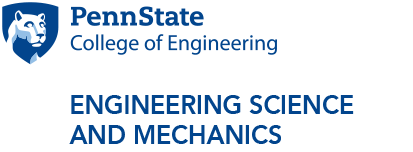Architecting thin-film morphology for optical, electronic, acoustic, biological, and other applications
Abstract: A collimated vapor flux can condense on a substrate to form a thin film comprising isolated parallel columns, as demonstrated conclusively by scanning electron microscopy in the 1960s though the anisotropy of these columnar thin films was optically evident much earlier. Substrate motion during deposition causes the parallel columns to grow in fanciful shapes, the columnar morphology of these sculptured thin films (STFs) being architected through physical (and physicochemical) vapor deposition. STFs can be made of metals, inorganic non-metals, and organic materials (including polymers). Both the material and the columnar shape are alterable during deposition. STFs can be deposited on planar surfaces, curved surfaces, and even topographically decorated surfaces.
Several different types of applications have emerged. Optical applications include polarization filters, other filters and integrated optical devices, optical biosensors, light sources, and photonic crystals. Acoustical applications encompass shear-wave filters and phononic crystals. Electronic applications include substrates, gate dielectrics, and passivation layers for flexible devices. Biomedical applications include tissue culture substrates, free-standing films for conformal coatings for prostheses and tissue transplants, gradient panels for protein-binding assays, and coatings for resurfacing bones. Biomimetic replication of dipteran eyes and buprestid elytrons lead to applications for solar energy harvesting and decoys for pest control. Forensic applications involve the visualization of latent fingermarks and partial bloody fingermarks.
Biography: Akhlesh Lakhtakia is Evan Pugh University Professor and Charles Godfrey Binder Professor of Engineering Science and Mechanics. He has been elected a fellow of Optical Society of America, SPIE, Institute of Physics (UK), American Association for the Advancement of Science, American Physical Society, Institute of Electrical and Electronics Engineers, Royal Society of Chemistry, Royal Society of Arts, and Sigma Xi. He has been designated a Distinguished Alumnus of both of his almaematres at the highest level. Awards at Penn State include Outstanding Research Award, Outstanding Advising Award, Premier Research Award, Outstanding Teaching Award, and the Faculty Scholar Medal. He received the 2010 SPIE Technical Achievement Award, the 2016 Walston Chubb Award for Innovation, the 2022 Smart Structures and Materials Lifetime Achievement Award, the 2022 IEEE Antennas and Propagation Society Distinguished Achievement Award, the 2022 Radio Club of America Lifetime Achievement Award, and the 2024 SPIE Gold Medal. He is a Sigma Xi Distinguished Lecturer and a Jefferson Science Fellow at the US State Department. His current research interests include electromagnetic scattering, surface multiplasmonics, photovoltaic solar cells, sculptured thin films, mimumes, bioreplication, and forensic science.
Media Contact: Bethany Illig



